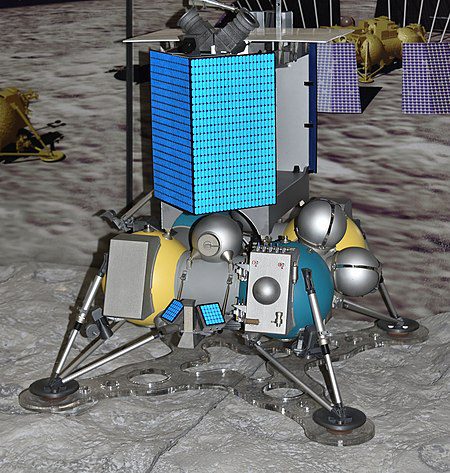A Soyuz 2-1b/Fregat M rocket sent Russia’s Luna 25 lander, also known as the Luna-Glob, into orbit from Vostochny cosmodrome in far eastern Russia, at 2310 GMT on 10 August. The lander and the Fregat M stage were placed into an initial parking orbit of 280 x 267 km at 51.7 degrees inclination. From here the Fregat M stage made a burn at 0007 GMT on 11 August to achieve Trans Lunar Injection (TLI), putting the spacecraft on a trajectory to the Moon. The spacecraft separated from the stage at circa 0030 GMT (all times from Jonathan McDowell).
After some trajectory corrections, the Luna 25 spacecraft made two engine burns (one with the main engine and one with the smaller low thrust engine(s) to slow itself into lunar orbit on 16 August. After another orbital change, it was due to make its landing attempt at the Boguslavsky crater near the South Pole of the Moon.
Built by NPO Lavochkin, the 1,750 kg Luna 25 lander was carrying Russian-built instrumentation (mainly from the Space Research Institute in Moscow) after collaboration with Western nations broke down following the Russian invasion of Ukraine. The instruments included a laser mass-spectrometer, an infrared spectrometer, a neutron spectrometer, an ion spectrometer, a dust monitor and various imagers.
Update on 20 August: Having achieved lunar orbit, and after an orbital change on 18 August, an engine firing ended in the destruction of the mission. The engine firing anomaly occurred during a manoeuvre to lower the spacecraft to a 110 x 16 km “pre-landing orbit” on 19 August in preparation for its lunar landing attempt. Contact was lost at 1157 GMT on 19 August. It later transpired that the engine firing, at 1110 GMT, had gone on for longer than expected (a failure to shut down) and this increased impulse had slowed the spacecraft so much that it could not orbit anymore, causing it to crash into the Moon. As Roscosmos put it, the spacecraft assembly “ceased to exist as a result of a collision with the surface of the Moon”.

Model of the Luna 25 – Luna-Glob lander. Courtesy: Wikipedia







